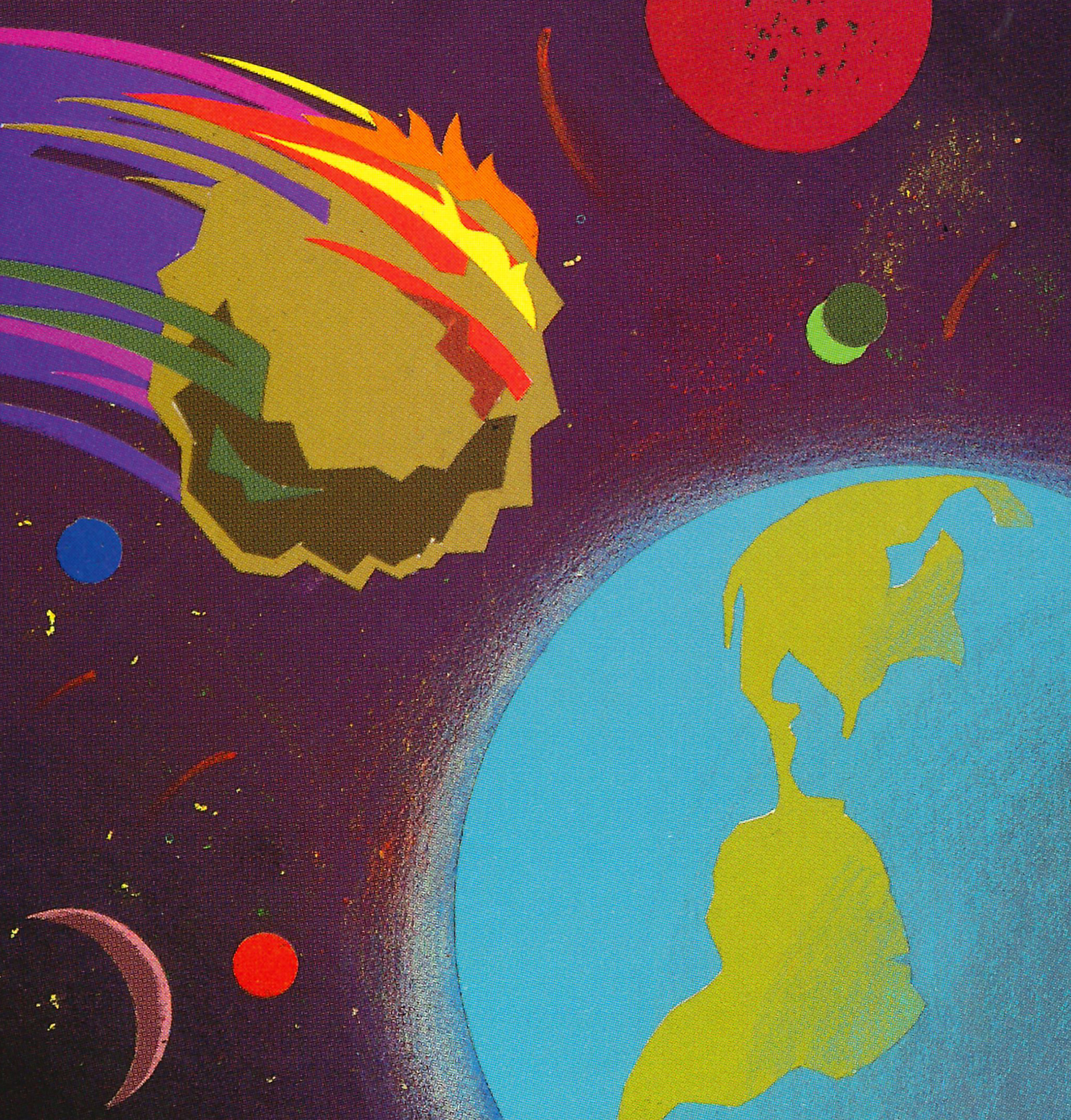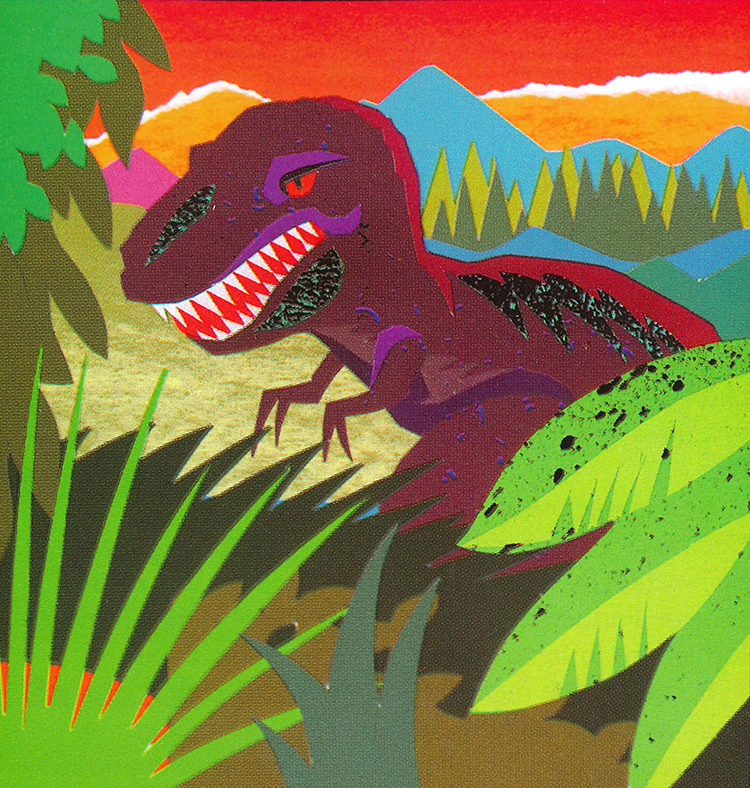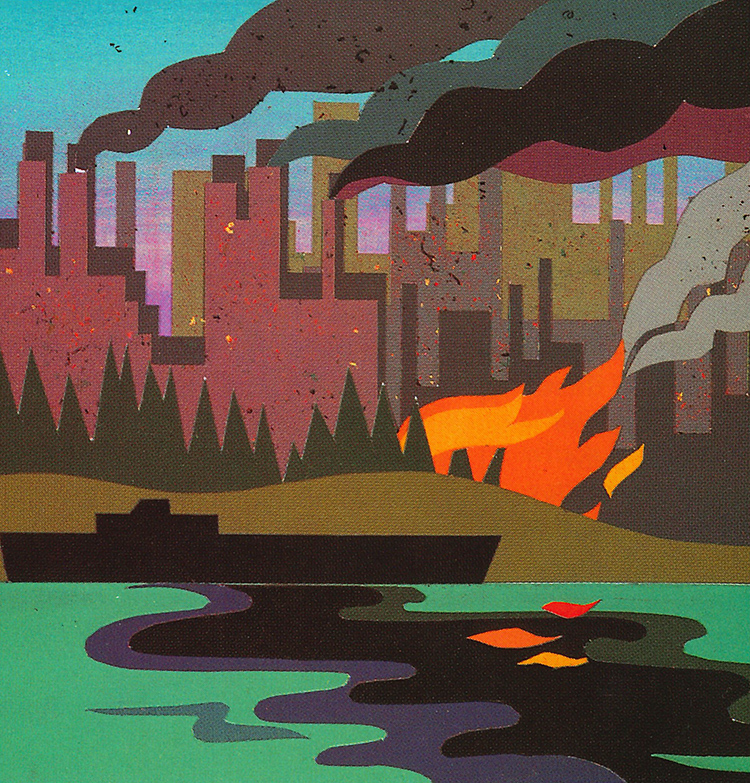Extinction on their minds Extinction on their minds Extinction on their minds
A sudden change in the environment killed off the dinosaurs 66 million years ago. Could it happen again, this time to the human race?

A sudden change in the environment killed off the dinosaurs 66 million years ago. Could it happen again, this time to the human race?
As the longest day of the year fades, Peter Ward looks skyward from his deck high above Lake Washington and wonders aloud when the next big rock with Earth's name on it, a cousin of the asteroid blamed for killing off the dinosaurs 66 million years ago, will pelt us. Just last year an asteroid passed within 11 moon-distances, a near miss. If we spotted one too close, Ward says, we could put our nuclear warheads to good use. Blast it to pebbles, he says, or at least steer it away.
As luck would have it, Buck Sharpton is among Ward’s first-day-of-summer barbecue guests. Sharpton is a staff scientist at NASA’s Lunar and Planetary Institute near Houston. Ward, a UW professor of geological sciences, calls him “Mr. Extinction.” Sharpton suggests that though the Earth has been hit by meteorites many times, such events are so rare they aren’t worth worrying about. “I suppose you read science fiction,” he says.
“I love good science fiction,” Ward jokes.
To Ward and Sharpton, impacts and mass extinctions are not pulp fantasies but serious business. Before a 1981 conference in Snowbird, Utah, most scientists had dismissed as science fiction the theory that an impact from space led to the downfall of the dinosaurs. “It became clear an asteroid impact was not as outrageous an explanation as it had seemed,” the prestigious journal Science later reported of the meeting.
Two years ago, Ward and Sharpton were among 80 researchers who met in Snowbird for another dinosaur postmortem, sponsored by the National Academy of Sciences and NASA. The gathering was called Snowbird II, as even scientists cannot resist a sequel. So-called impactors were again matched against non-impactors—a brainier version of the Hatfields and McCoys. Non-impactors, by and large, favor a volcanic explanation. In either scenario, a global dust cloud—caused by volcanic ash plumes or by fallout and global fires triggered by a meteorite—blocked the sun sufficiently to chill the planet. Many of the creatures, dinosaurs included, could not sustain themselves in the new, wintry climate and succumbed.
After the second Snowbird conference, Science declared the impactors victorious, but such issues are rarely black and white. By reserving judgment, Ward and Sharpton represent a small middle ground. Their position has earned them the dubious honor of selecting and editing papers from Snowbird II, due later this year.
Ward’s phone ear is sore from being screamed into by prospective authors. Accused one distinguished scientist, “You’re a goddam impactor!”
Only a handful of mass extinctions have occurred over the past 500 million years, give or take a millennium. And only once has there been what scientists call a recognizable, “signature event.” Most experts concede as overwhelming evidence that something wicked this way fell 66 million years ago, the transition from the geological periods that mark the age of dinosaurs, the Cretaceous, and the rise of mammals, the Tertiary. The period is called the K-T boundary.
The mineral iridium, abundant in meteorite fragments, has been found at the 66-million-year rock layer worldwide. Scientists conclude that quite a bit of the stuff must have been aloft, from an asteroid or comet frying off pieces of itself during the plunge. An impact would have kicked up more dust. One theory argues that chunks of meteorite mixed with earth bounced back toward space, then fell again as hot coals to start global fires.
Non-impactors, citing a 1983 Science paper by UW Chemistry Professor William Zoller, note that iridium can be belched by hot-spot volcanos, the type found in Hawaii. Further, they point to huge K-T-era basalt formations in India, a sign of massive lava flows.
Bolstering the meteorite camp’s claim is rock known in impact argot as “shocked quartz,” formed from incredible force and heat. The quartz has been found across North America at the K-T boundary. Further, a K-T boundary-era crater, a perfect dimple about 20 miles across, has been seismically mapped under the cornfields of Manson, Iowa. But scientists do not believe the meteorite responsible for that dent is large enough to account for the global cooling, so they are groping for other impact sites.

Did a Big Splash accompany a Big Crash? Several weeks before Snowbird II, a team led by Jody Bourgeois, UW associate professor of geological sciences, reported in Science that a huge meteorite could have kerplunked into the Caribbean. From analyzing Texas rock exposures near the Brazos River—an area so ugly Bourgeois recommended that Sciences artists choose a different subject to illustrate that week’s cover—they concluded that an unusual layer of sandstone could have been deposited only by a giant tidal wave, or tsunami. Bourgeois figures the tsunami was perhaps a football-field high, a hundred times larger than an average Pacific Ocean tsunami. The big wave could have been generated only by an asteroid or an earthquake-triggered landslide, she says. She estimated the source was within a thousand miles of the site.
Earlier this year, two other groups of scientists fought to claim further evidence that the dinosaurs’ swan song was a calypso. Deposits in Cuba, Haiti and the Gulf of Mexico, they asserted, were left by a wake of a hit somewhere off Colombia.
Sharpton is often consulted on new impact claims. Of this latest, he told Newsday that “there are serious concerns about the premature speculation and inadequate descriptions of the site and samples”—qualms too numerous, and many too arcane, to list here. One simple bit of missing evidence: a crater.
Ward jokes that watertight proof for an impact-based extinction would be a triceratops skull with a horn snapped in two and the others singed from a meteorite rocketing by. “What is the probability the last dinosaur left a fossil?” he asks. What about the last million dinosaurs? They may not have picked the wisest times and spots in which to leave their bones for posterity. “Vertebrate fossils don’t preserve well,” Ward says.
So much for the ado about asteroids. The issue may turn out to be a red herring.
“With extinctions, the more spectacular, the better the copy,” Ward says. “The impact may have been the straw that broke the camel’s back—if you can call a hit from space a straw. I believe it is indisputable that an impact occurred 66 million years ago. But I do not believe that a single, large impact caused all of the extinctions at the end of the Cretaceous. I lean toward the most simple and elegant explanation, an environmental perturbation that began before an asteroid hit.”
Ward pegs his evidence to the shells he and graduate student Ken MacLeod collect by the seashore, from the pancake-layered cliffs along the Bay of Biscay, located along the Atlantic Coast in Spain and France. Starting about a million and a half years below the boundary layer, near sea level, large fossil clams called Inoceramus pave the place like cobblestones. As Ward and MacLeod work their way up the layers, the clam mosaic grows sparse. The clams go poof 1.5 million years before the death of the dinosaurs.
Deep-ocean cores from the same layers reveal microfossils from the shells of the same clams, Ward says. The shell fragments disappear at the same rate as the clams in the cliffs, confirming “a worldwide extinction of one of the most common marine creatures on Earth,” Ward says.
What killed the clams? To dig for an answer, Ward and MacLeod passed pinhead-sized fish teeth found with the clams to Tony Irving, a UW geochemist. The teeth contain metals called rare earth elements, from which Irving can detect oxidation. Oxidation increases in the teeth as the clams begin to die off, so it appears the clams overdosed on oxygen in the seawater. Irving suspects cold, oxygen-rich water from the poles, which is heavier than warm water, flowed toward the equatorial sea bottom, descending on its victims.
“If this oceanic event had not occurred, the end-Cretaceous extinctions that killed the dinosaurs and thousands of other creatures might not have occurred, either,” Ward says. “They were ripe for a fall.”
* * *

Ward doesn’t spend all of his time collecting long-dead clams. He has written three books about “living fossils,” two of them about the chambered nautilus. The nautilus, which has been described as a squid stuffed into a spiral shell, has survived for millions of years but is nearly extinct in Tanon Strait off the Philippines, where it was abundant only a few years ago. The natives have dynamited the reefs for fish and nautilus shells.
“The main industry in the Philippines is people,” Ward says. “Too many people, not enough food.” If there were a sign above the islands, it would read, “Welcome to the Future,” Ward says.
Ward has not been back to that future since 1987, but the future is everywhere. The African elephant is being slaughtered for its ivory, for example. In bigger trouble is the rhinoceros. Powdered rhino horn is sold as an aphrodisiac, so the trade is very secretive and difficult to police.
Humans have been demanding more than nature could supply for thousands of years. Until recently, overexploitation—most often people literally biting off all that they could chew—was the dominant force behind most extinctions.
Now, environmental deterioration has reclaimed first place on the species mortality chart. This time, instead of super-oxygenated oceans or an ice age, the species spending so much of its intellectual energy on what ended the dinosaurs is rendering the planet uninhabitable for countless other organisms.
Questions on the outlook for our fellow species are often put to Gordon Orians, UW zoology professor and acting director of the UW Institute for Environmental Studies. Orians is also president of the Organization for Tropical Studies and serves on a National Academy of Sciences greenhouse-warming policy panel.
The number of threatened species is anybody’s guess. “For example, 90 percent of the tropical insects haven’t been named or described,” says Orians, pulling from his office shelf the Invertebrate Red Data Book, a two-inch-thick hardback published by the International Union for the Conservation of Nature and Natural Resources.
Invertebrates account for three-quarters of the world’s species and most of its biomass. Page after page chronicles butterflies, snails, sea urchins and scores of other creatures threatened with extinction. There is a similar hit list for vertebrates, whose status is much better known, Orians says. The Invertebrate red book could be much fatter.
Each day there seems to be more bad news. “Loss of amphibians is ‘canary’ warning sign for the planet,” one recent headline reads. Frogs, toads and salamanders the world over are vanishing mysteriously. The bird reference is to the proverbial canary in the coal mine. If it dies, get out. The air isn’t fit to breathe.
Climate-altering pollution is exacerbating what Orians sees as the most severe problem: habitat destruction. Forests worldwide are being chopped into ever smaller fragments. “There will be no primary forest outside national parks in Costa Rica, for example, after the year 2000. By 2020, at the current rate, the only two large blocks of remaining lowland rain forest will be in the upper Amazon basin and the Zaire basin.”
Fragments don’t hold as many species as bigger patches, Orians says. “Many hawks and owls, for example, aren’t in small patches because they require large foraging areas. Park boundaries don’t coincide with ecological boundaries. Elk, for instance, don’t know where Yellowstone Park ends.”
Costa Rica is embracing a concept known as “mega-reserve” management. Forests, parks and reserves are being linked “to provide functionally larger areas within which more species can survive,” Orians says. The same approach could be fruitfully applied to huge and complex ecosystems in the United States— say, Greater Yellowstone, and, in Washington state, the North Cascades and the Olympics.
“The value of preserving other organisms ranges from purely utilitarian to aesthetic,” Orians says. “There are also very profound ethical dimensions. For example, is it appropriate for us to preside over other organisms and cause their extinctions?”
In spite of everything, Orians believes that we humans will somehow avoid making dinosaurs of ourselves, unless we suffer the consequences of blowing one another to smithereens—or, Orians allows, the outrageous misfortune of a big asteroid plastering our little blue bull’s eye.
Until then, the only question is how much company we will have.